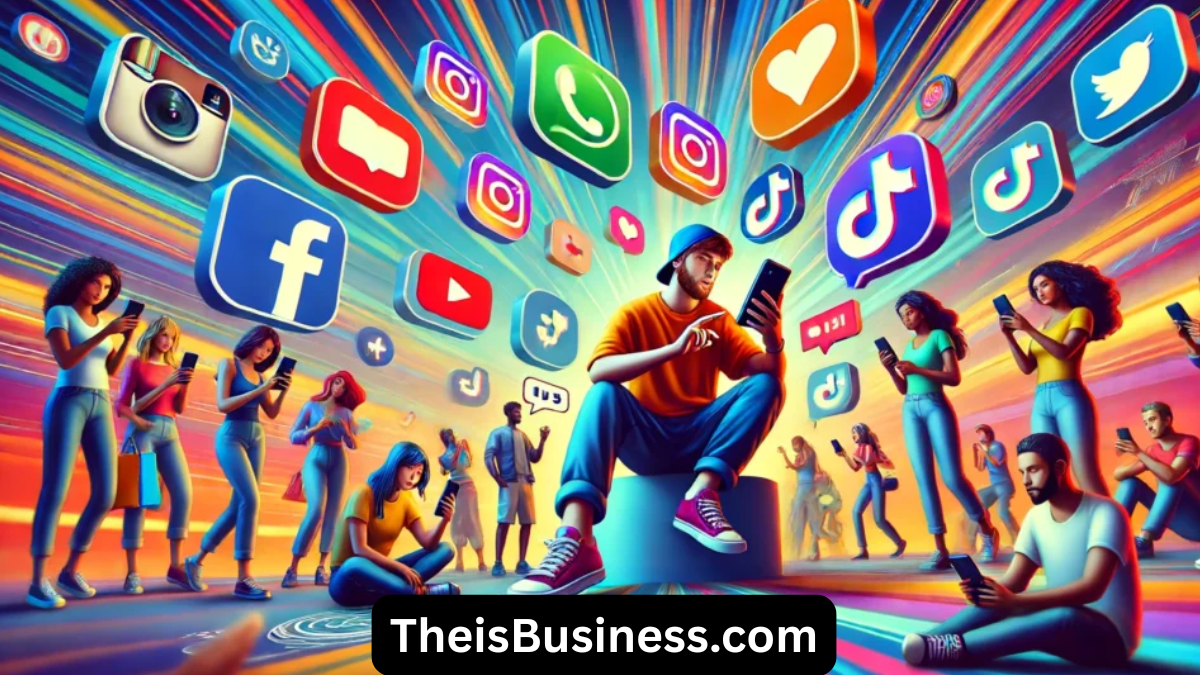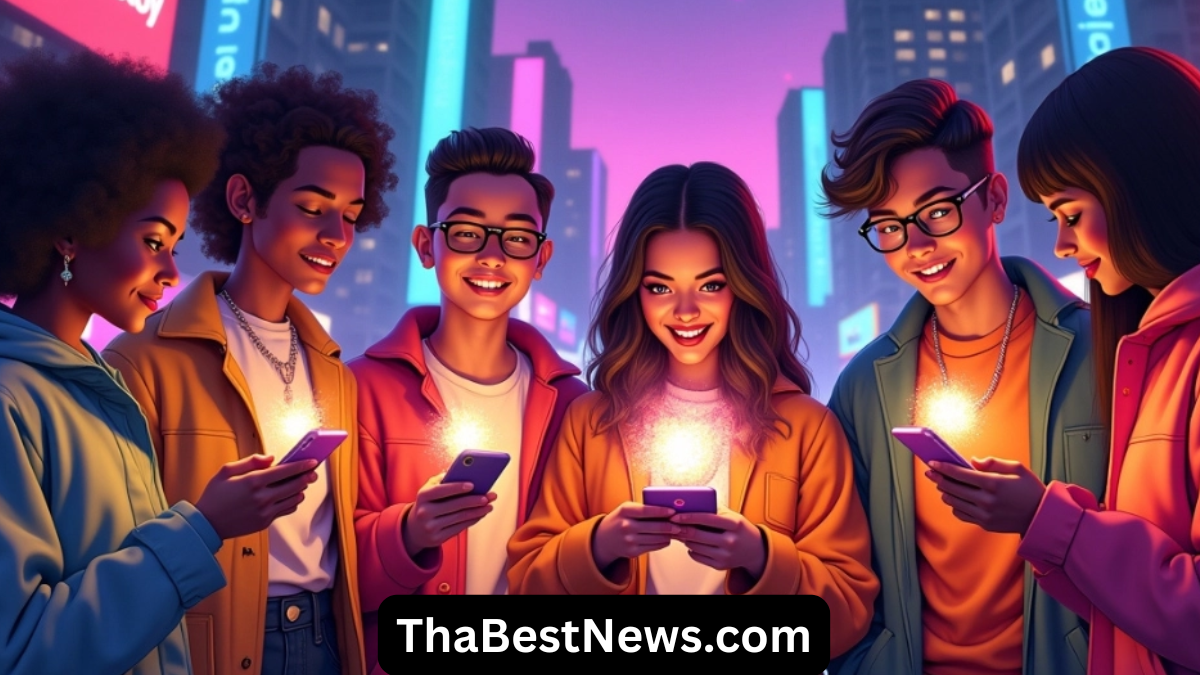The Rise of Influencer Culture
The term “Influencersgonewild” has transformed from a mere buzzword into a full-blown profession in today’s digital age. From YouTube vloggers and TikTok dancers to Instagram models and Twitter personalities, influencers have reshaped the way brands engage with audiences. These digital personalities wield enormous influence over the preferences and behaviors of their followers, often turning everyday content into lucrative careers. Amid this backdrop, certain platforms and terms have emerged that both celebrate and criticize this growing culture. One such term gaining attention is “InfluencersGoneWild.”
InfluencersGoneWild is a keyword that evokes curiosity, controversy, and intrigue. The name itself suggests a combination of fame, scandal, and possibly the unfiltered realities of influencer lifestyles. This term encapsulates a side of influencer culture that isn’t always polished or brand-friendly. It points to raw, sometimes provocative moments where influencers step outside the conventional boundaries of their curated personas. The digital community Influemcers Gonewild has taken notice, making it a focal point of discussion across social platforms and forums.
What Does InfluencersGoneWild Represent?
At its core, InfluencersGoneWild is a digital space or keyword trend that highlights moments when influencers behave in ways that deviate from their usual image. Whether it’s intentional content shared for virality or accidental leaks and behavior captured on social media, the content associated with this term often features influencers in controversial or unexpected scenarios. This trend doesn’t only center around adult or provocative material, though that can be a component. It also reflects broader themes like influencer accountability, the impact of fame, and the performance of identity online.
The evolution of influencer branding has led to the creation of highly managed online personas. These personas are often crafted with brand deals, image maintenance, and audience engagement in mind. However, the human side of influencers can sometimes clash with this curated image. InfluencersGoneWild serves as a digital archive, whether informal or centralized, that showcases the unfiltered moments. It is a digital phenomenon born from both public fascination and the ever-thinning boundary between personal privacy and public exposure.
The Appeal of Unfiltered Influencer Content
The fascination with unfiltered influencer content speaks volumes about society’s relationship with fame and authenticity. Audiences today are increasingly skeptical of overly edited photos, scripted vlogs, and paid promotions. They crave authenticity, even if it comes with flaws and imperfections. InfluencersGoneWild feeds this desire by pulling back the curtain. It exposes moments that might be embarrassing, scandalous, or simply more genuine than the influencer’s usual content.
This trend taps into voyeurism and the thrill of accessing something “exclusive” or “leaked.” It challenges the idea of privacy and ownership of one’s digital image. While some of the content might be shared willingly by influencers as a form of personal branding or monetization, much of it finds its way online without the influencer’s consent. This raises ethical questions about digital boundaries, exploitation, and the consequences of living a public life.
Ethical Concerns and Digital Responsibility
One of the most pressing issues surrounding InfluencersGoneWild is the ethical dilemma it presents. The desire to see influencers “out of character” often leads to breaches of privacy and consent. Screenshots, screen recordings, and data leaks contribute to a digital ecosystem that thrives on exposure and shock value. Many of these instances involve influencers being captured in vulnerable or compromising situations, sometimes without their knowledge.
This phenomenon highlights a broader cultural issue: the normalization of digital voyeurism. Audiences, hungry for realness, often disregard the consequences of sharing or consuming content that was never meant to be public. Influencers, despite their fame, are individuals entitled to privacy and respect. Yet the public’s insatiable appetite for scandal often overrides ethical considerations. InfluencersGoneWild becomes a symbol of how the digital age commodifies personal moments for entertainment and profit.
Monetization and Platform Dynamics
Another key aspect of this phenomenon is the monetization of influencer content, particularly when it leans toward the explicit or controversial. Many influencers, especially those in the adult content industry or with fan-based subscription platforms, have blurred the lines between personal branding and adult entertainment. Platforms like OnlyFans have enabled creators to share exclusive, behind-the-scenes, or risqué content directly with paying fans. InfluencersGoneWild often intersects with this model, either by aggregating such content or referencing it as part of larger trends in monetized digital expression.
This brings up the debate about ownership and consent once more. While some influencers willingly participate in adult content creation, the unauthorized sharing and reproduction of such material is a violation of their rights. InfluencersGoneWild has become a gray area—sometimes used as a promotional tool, other times as a platform for exploitation. The economic side of this phenomenon cannot be ignored, as clicks, views, and subscriptions generate substantial revenue for third-party platforms and aggregators.
Cultural Impact and Perception Shifts
InfluencersGoneWild has also had a notable impact on how influencers are perceived by the public. The curated image of the “perfect life” is often replaced by moments that are far from ideal. This can lead to public backlash, cancel culture, and brand disassociation. On the flip side, some influencers embrace these moments as part of a rebellious or transparent brand strategy. They may use the attention to challenge societal norms about propriety, sexuality, or self-expression.
This cultural shift has forced audiences to reassess their expectations. Is it fair to hold influencers to unrealistic standards of behavior? Does exposure of their private moments make them more relatable or tarnish their reputation? The answers to these questions vary depending on personal values and the specific context of the content in question. Nonetheless, the dialogue spurred by InfluencersGoneWild has added a new dimension to conversations about fame, privacy, and the performance of self in the digital age.
Legal Repercussions and Online Safety
The legal landscape surrounding influencer content is also changing in response to incidents associated with platforms like InfluencersGoneWild. Content that is leaked without consent can fall under the category of digital harassment, revenge porn, or intellectual property theft. In several countries, laws are evolving to better protect digital creators from exploitation. Influencers now have more legal avenues to pursue action against unauthorized content sharing, although enforcement remains challenging.
Online safety and content regulation are becoming more important than ever. Social media platforms are under pressure to moderate content and prevent the spread of non-consensual materials. Influencers themselves are investing in legal counsel and digital protection services to safeguard their content. As technology advances, so too must the infrastructure for online accountability and user rights protection.
The Role of the Audience
Audiences play a crucial role in shaping the direction of trends like InfluencersGoneWild. Consumer behavior, after all, drives platform algorithms and content visibility. When users seek out and share unfiltered or controversial content, they contribute to the popularity and profitability of these trends. Therefore, digital responsibility doesn’t lie solely with platforms or influencers. Viewers must also be conscious of the ethical implications of their clicks, shares, and comments.
Audience participation in digital culture comes with a responsibility to respect boundaries, support consent, and recognize the humanity behind every digital persona. Influencers, for all their fame and reach, are still people navigating the complexities of an always-connected world. InfluencersGoneWild is not just a trend—it is a mirror reflecting the challenges and contradictions of our digital era.
Future of Influencer Culture in a Hyper-Exposed World
Looking ahead, the phenomenon surrounding terms like InfluencersGoneWild suggests that influencer culture will continue evolving toward transparency, controversy, and decentralization. The lines between private life and public persona will grow even blurrier. However, with greater exposure comes a greater need for digital ethics, platform accountability, and cultural literacy.
Influencers will likely develop more nuanced strategies for managing their digital identities. This could involve embracing vulnerability while protecting their rights and content. At the same time, platforms may introduce stricter content moderation tools and legal protections. As this ecosystem grows, so too must our understanding of the power dynamics,Influemcers Gonewild responsibilities, and cultural implications at play.
Frequently Asked Questions (FAQs)
What is InfluencersGoneWild?
InfluencersGoneWild is a term associated with digital content that showcases influencers in unfiltered, controversial, or private scenarios. It often features behind-the-scenes moments that deviate from their public personas, sometimes intentionally shared and other times leaked without consent.
Is InfluencersGoneWild a website or just a trend?
The term can refer to both a keyword trend and specific platforms or pages that aggregate such content. It has become a broader concept in discussions about digital culture, influencer behavior, and online voyeurism.
Why is InfluencersGoneWild controversial?
It is controversial because it often involves content that breaches privacy or shows influencers in compromising situations. The ethical concerns center on consent, exploitation, and the commodification of personal moments.
Do influencers benefit from being featured on InfluencersGoneWild?
In some cases, influencers may use such exposure to increase their visibility or drive traffic to their subscription-based content. However, in many instances, being featured is not voluntary and can lead to reputational damage or legal issues.
What should users know before engaging with such content?
Users should be aware of the ethical implications of consuming or sharing content that may be non-consensual. Respecting digital boundaries and promoting responsible online behavior are essential to maintaining a healthy digital ecosystem.
Can influencers take legal action if their content is shared without permission?
Yes, influencers can pursue legal action under various laws related to privacy, intellectual property, and digital harassment. However, enforcement can be complicated depending on the platform and the jurisdiction.
Is InfluencersGoneWild part of cancel culture?
It can contribute to cancel culture if the content leads to widespread criticism or backlash against an influencer. However, reactions Influemcers Gonewild vary, and some influencers may recover or even benefit from the exposure, depending Influencersgonewild on how they handle the situation.
What is the cultural significance of this phenomenon?
InfluencersGoneWild highlights the tension between curated digital personas and real human experiences. It reflects society’s desire for authenticity and its fascination with fame, while also pointing to the challenges of privacy and consent in a hyper-connected world.


